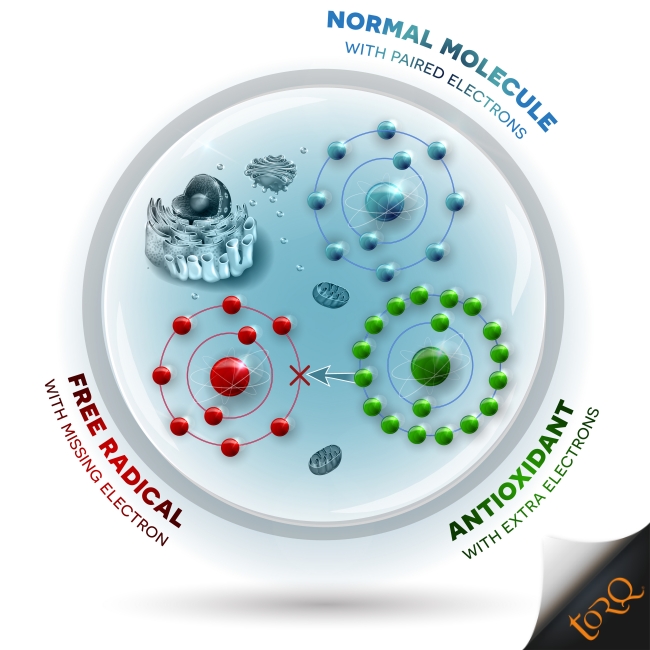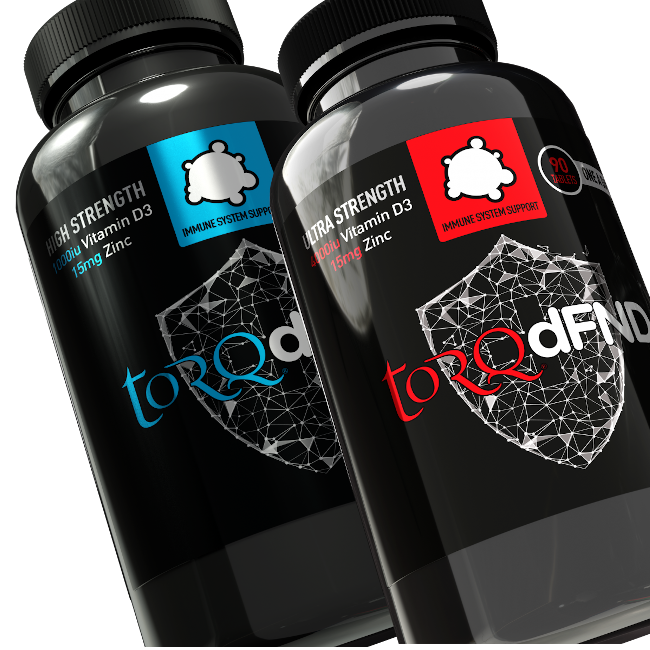Zinc is known as an ‘essential trace element’. Here we explore why Zinc is such an important nutrient to source from our daily diet and the roles it plays within the human body.
Essential trace elements are required for the optimal functioning of many biological, physiological & immunity-based cells, enzymes and hormones. Other trace elements required by the body are iron, chromium, selenium, fluorine & iodine. Combined, all of the known trace elements listed above including zinc, will account for around 0.02% of an individual’s body mass. To put this into some sort of perspective, for somebody weighing 75kg, this would equate to a minuscule 15g of trace elements within the body.
But don’t let this fool you into thinking that these elements aren’t important. Zinc alone is required for the activity of at least 300 known enzymes, which play a role in the regulation of cellular respiration, maintenance of cell walls, along with the scavenging of free radicals, which when found in high quantities could result in compromised immunity. Zinc cannot be produced by the human body and must be sourced from the food we eat.
Zinc on Training & Immunity: Due to the training environments of many athletes, such as gyms, changing rooms, swimming pools or even more natural, but dirty environments such as mountain bike or running trails, an athlete may find that they are exposed to pathogens which could affect immunity. This can lead to an increased chance of becoming ill and for any athlete, unplanned time away from training due to illness can be a major inconvenience, disrupting training and the associated gains.
With Zinc playing a significant role in the regulation of the immune system, specifically the innate immune system, the part of the immune system responsible for immediate attack against infections such as the common cold and flu viruses, it is easy to see how a Zinc-deficient diet can lead to poorly functioning immunity. Cells which make up the innate immune system can become compromised where macrophages, neutrophils and natural killer cells struggle to complete the task of neutralising infection.
Similar to Vitamin C, Zinc is an antioxidant, which helps to neutralise free oxygen radicals. Free oxygen radicals, in simple terms, are unbalanced atoms. Atoms have a number of electrons surrounding them and if these atoms are balanced, with an equal number of electrons, it will be safe and support biological functions. However, when these free oxygen radicals become unbalanced, they can attack cells causing them to mutate or degrade, making them more vulnerable to infection.
To help you grasp how antioxidants function, the graphic below shows a normal molecule (blue) with paired electrons circulating the central nucleus. If you were playing a game of spot the difference, it would be a boring game as there are no differences, no matter which angle you look at the molecule from. The free radical shown in red however has one major difference – the electrons circulating the nucleus are not equal from every angle and so this molecule is unbalanced and thus becomes a potential threat. An antioxidant such as Zinc (pictured in green) has several extra electrons which it can donate to free radicals to re-balance the circulating electrons eliminating the threat of the free radical attacking cells and furthermore, protecting cells from easy infection by a virus or bacteria.

This may leave you wondering how free radicals are produced? Well, free radical production can be significantly increased during periods of oxidative stress when people are exposed to smoke, environmental pollution, certain chemicals, and even high exercise training load. As we have already learned above, when free radical production increases, so does susceptibility to illness and ironically, if we become infected, free radical production goes through the roof. The role of Zinc is to prevent an infection from taking hold in the first place, but should you be unfortunate enough to become infected, this is where mega-dosing with Vitamin C becomes important due to the volume of antioxidants this can deliver. To learn more about mega-dosing with Vitamin C, click on this link or read through the tabs on our TORQ aTAC product page – a product developed by ourselves off the back of the mega-dosing research.
Sourcing Zinc from the Diet: Foods that typically contain sufficient quantities of Zinc are red meat and various sea foods. Those who choose to lead vegan or vegetarian diets can still consume Zinc from various seeds, beans, and pulses, however the potency within these foods is far less than from a mixed diet. If a high training load is paired-up with a vegan or vegetarian diet, there is a higher chance of a person becoming deficient in Zinc and we will discuss how exercise impacts the availability of Zinc shortly.
To help you to source some Zinc-rich foods, we have provided some examples below from non-vegan and vegan foodstuffs.
Animal Based Zinc Source
| Food Source | Zinc Content (mg) |
|---|---|
| Oysters (100g) | 78.5 |
| Beef (100g) | 12 |
| Lamb (100g) | 12.4 |
| Beef Liver (100g) | 12.8 |
| Pork (100g) | 5 |
| Chicken (100g) | 5.1 |
Vegetarian & Vegan Based Zinc Sources
| Food Source | Zinc Content (mg) |
|---|---|
| Tahini (100g) | 10.4 |
| Sesame Seeds (100g) | 10.2 |
| Cashews (100g) | 5.7 |
| Flax Seeds (100g) | 4.3 |
| Soy Beans (100g) | 4.7 |
| Brazil nuts (100g) | 4 |
Zinc on Exercise & Performance in Physically Active People: Exercise is known to significantly increase the metabolism of Zinc and because of this, it is a micronutrient that an athlete or physically active person should pay particular attention to. Exercise stimulates red blood cell production – a training adaptation enabling more oxygen to be delivered to the working muscles. However, red blood cells also absorb Zinc during this process and this reduces its availability for other roles within the body. Not only this, but as we touched on previously, Zinc is used to regulate many enzymes, one of which plays a critically important role in moderate to high intensity exercise. This particular enzyme is called pyruvate dehydrogenase (PDH), just in case you were interested? Additionally, Zinc just like sodium, is also lost through sweat and can be expelled at exceptionally high quantities (0.6 – 1.4mg/l). On the basis that Zinc can be excreted via high sweat rates, people who complete regular indoor training activities like Zwift, Peloton or indoor exercise classes, where typically both exercise intensity and sweat rates are high, should pay particular attention to Zinc to negate any chance of developing a deficiency.

Summary: If your aim is to ensure optimal physical performance whilst also maintaining the normal functioning of your immune system, all physically active people should ensure Zinc is present in sufficient quantities by consuming at least 100% of your recommended daily target of 10mg/day. Although required in very small daily doses, Zinc plays several vital roles in general bodily function and our immunity against illness. Athletes and physically active people have a higher turnover of Zinc compared to less physically active people and if losses through sweat and exercise are not replenished, there is a strong case to suggest that a deficiency may start to occur. TORQ dFND contains over 15mg of Zinc, which is 156% of the daily nutrient reference value (NRV). This additional 56% of NRV will allow for an increase in Zinc availability, but also address the depletion lost through exercise.

TORQ dFND one-a-day tablets also contain Vitamin D3, a nutrient which has also been proven to support the normal functioning of the immune system. To learn more about the multiple benefits of Vitamin D, click HERE.
References:
Bonaventura, P., Benedetti, G., Albarède, F. and Miossec, P., 2015. Zinc and its role in immunity and inflammation. Autoimmunity reviews, 14(4), pp.277-285.
Read, S.A., Obeid, S., Ahlenstiel, C. and Ahlenstiel, G., 2019. The role of zinc in antiviral immunity. Advances in nutrition, 10(4), pp.696-710.
Blazsek, I. and Mathe, G., 1984. Zinc and immunity. Biomedicine & pharmacotherapy= Biomedecine & pharmacotherapie, 38(4), pp.187-193.
Gruber, K. and Rink, L., 2013. The role of zinc in immunity and inflammation. In Diet, Immunity and Inflammation (pp. 123-156). Woodhead Publishing.
Prasad, A.S., 1998. Zinc and immunity. In Molecular and Cellular Effects of Nutrition on Disease Processes (pp. 63-69). Springer, Boston, MA.
https://ods.od.nih.gov/factsheets/Zinc-HealthProfessional
Wintergerst, E.S., Maggini, S. and Hornig, D.H., 2007. Contribution of selected vitamins and trace elements to immune function. Annals of Nutrition and Metabolism, 51(4), pp.301-323.
Osamu, W.A.D.A., 2004. What are Trace Elements?. Trace Elements, 351.
Prasad, A.S., 2014. Zinc: an antioxidant and anti-inflammatory agent: role of zinc in degenerative disorders of aging. Journal of Trace Elements in Medicine and Biology, 28(4), pp.364-371.






